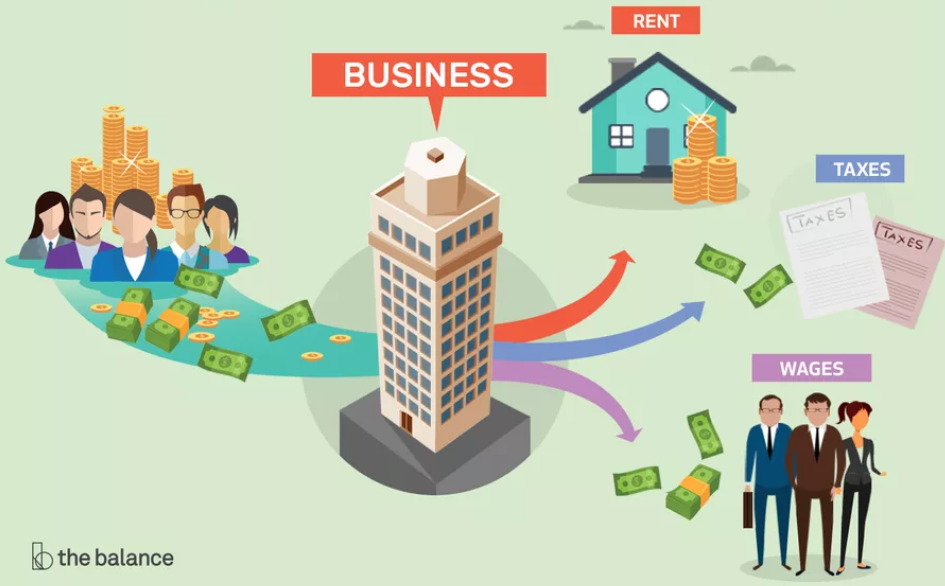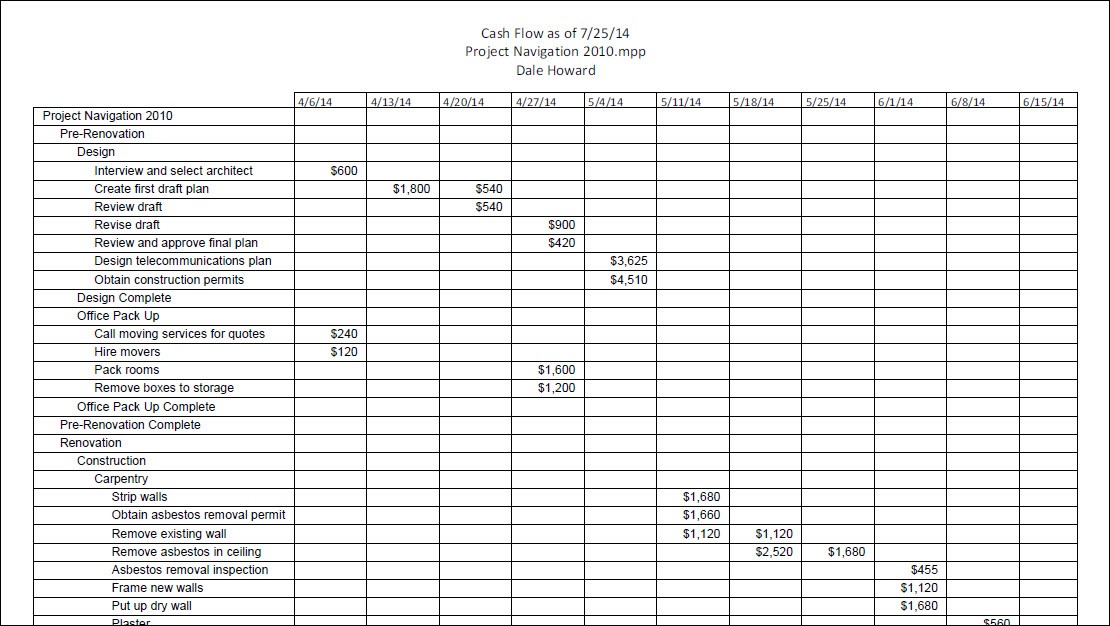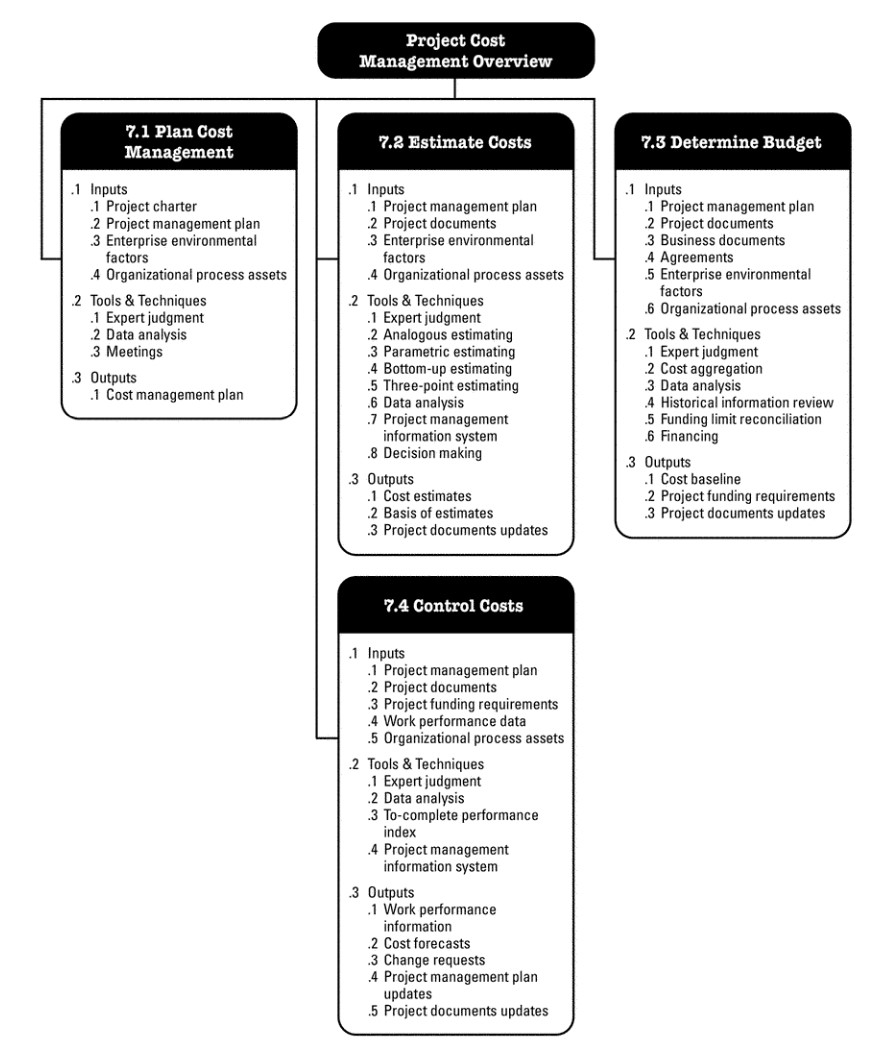Cash flow and milestone payments
Rasmusbjerg (Talk | contribs) (→Introduction) |
Rasmusbjerg (Talk | contribs) (→Definition of Cash flow and milestone payment) |
||
| Line 33: | Line 33: | ||
Cash flow <ref name=''4''> ''Civil Engineering Procedure (7th Edition), chapter 7'' </ref> in its basic elements consists of the two: | Cash flow <ref name=''4''> ''Civil Engineering Procedure (7th Edition), chapter 7'' </ref> in its basic elements consists of the two: | ||
| − | *Money flowing | + | *Money flowing '''in''' to the project, portfolio, business etc. |
| − | *Money flowing out of the project, portfolio, business etc. | + | *Money flowing '''out''' of the project, portfolio, business etc. |
Revision as of 12:29, 22 February 2019
Abstract
This article will focus on how Cash flow and milestone payment [1] can help a manager in either program, project or portfolio, to see the costs, income vs outcome of the operation, and to help the manager motivating the workers, to reach a goal. Preferably a common goal, to get them working together, by offering the milestone payments.
The two fundamental ideas of cash flow and milestone payments are to get an overview of the following:
- Use the cash flow tool, to get an idea of how the money is flowing in the business, and to see the payments. The income vs. the outflow.
- Use milestone payment to set up a program to award the hired freelances, if they are doing their job according to the managers timeline and quality, or to give a group of freelancers a common goal, and give them a “team” feeling to get them to work together the best way possible.
The goal of combining the two, are to use milestone payments and cash flow in a symbiosis to get the milestones incorporated in the cash flow, to get an understanding of the payments going in/out of the company/project etc. according to the time schedule, as a tool of planning. Furthermore, to focus on how the two can be used on a daily/weekly base, to get the most out of the models.
To help understand these models, the “Cost Management[2]” will be used as a management style, because it relates to the idea of cash flow. Because of this relation, it also relates to milestone payment, because it is also a tool to control the money coming out in form of salaries and bonuses, according to the agreed contracts between the manager/company and the hired freelancers.
Introduction
This article will focus on:
- Cash flow
- Milestone payment
- Implementing the two together in cost management
- What advantages the two tools have, when they are used in a combination.
Definition of Cash flow and milestone payment
To get an idea of what the two tools actually contains, here’s a little breakdown of the two:
Cash Flow
Cash flow [3] in its basic elements consists of the two:
- Money flowing in to the project, portfolio, business etc.
- Money flowing out of the project, portfolio, business etc.
This means, that cash flow is a tool, that gives an overview of the money coming in and out of the project etc. The cash flow model diverts, after what type of either program, project or portfolio its covering. The reason the model divert, are that the span of the three are different, and also that the objective can be different from one to another.
Below is a picture of cash flow shown in a business situation.

Milestone payments
Milestones are some of the important key points (also described in [5]), that means something throughout the duration of the project. The milestones are something that the board/management decides, when taken the activities in scope in consideration. Then the key milestones can be pointed out and lined up in a timeframe diagram. This allows the management to see, what milestones that needs to be done before other tasks can begin, and therefore what the key milestones are. The definition of milestone payment (progress payment) are, that the management pays the hired freelancers when an agreed milestone is achieved, according to the contract between the parts. The milestones are something that either are agreed on mutually, or decided beforehand, and are in the spectrum between the start and the end of the program, phase, project, portfolio etc. As the word “progress payment” strongly hints, it means that its payment after the progress.
Cash flow and milestone payment in general
Cash flow is a tool, that gives an indication about the money moving in and out of the company, or in a project, program or portfolio. It shows the management how the money is being spent, how much they spend, what income they are generating, and what they are subjected to get. The cash flow can be used as an instrument over a chosen period, that the user selects, or over the entire lifespan of the company etc. Cash flow is way of measure the amount of “cash” or value in the company/project etc.
The problem with the cash flow tool is, that it only calculates the tings that can be “converted” into cash, and therefore only liquid assets. By other words, cash flow describes the overall financial performance, and is thus a tool to show the shareholders/management the true value in liquid assets, flowing in and out. A good idea to help to handle the cash flow tool, are to make a chart showing each phase in the process. As an example, a selected view of a cash flow of a building project, shown below:

This picture shows the cash flow of a random building-project. The cash flow shows the flow of cash in the project, each week. This gives an overview of what money are being spend on the project, and what money the managers are generating.
Often in a building project, the cash coming in, as agreed. Sometime in form of milestone payments, sometimes at the start of the project, or at the end of the project. This off course all depends on the contractually agreed terms. Then the chart over the cash flow gives an idea to the management of the money being spent and generated and can be updated running along the project. Then the chart works like a cash flow with constant value to the management, because the chart is up to date and shows the cash flow of the project.
Milestone payments can be used to make a common goal and an incitement towards working together. If it works well, the idea of milestone payment is, that everyone gets “bonusses” if they achieve the goals there were agreed upon in advantage. It gives everybody a reason to do their best to get the collaboration to work, because everybody gets rewarded if they get to the milestones on time (or before time) according to the time/work plan. This type of milestone payment is often if it’s a bigger project. If it’s a smaller type of project, for instance an R&D project[7], milestone payment can be used as a payment arrangement between the contractor and freelancers. The contractor can then use this method to pay the freelancer when the agreed milestones are complete according to time and quality.
The chart over cash flow can also be used, as an example in milestone payment. The big parts of the chart would then work as the milestones, to get an idea of when they should be complete, and what money these milestones are associated with according to the freelancers. This shows the freelancers when they should be done with their milestones, and what payment they are expected to get, and what time they should be completed by.
Implementation in cost management
Milestone payments is also a very widely based tool. Meaning, it can be implemented by a manager/person in a lot of different scenarios. As an example, it could be used in small R&D projects, where the focus in on research and developing, and would often be a small idea or some kind of new technology being created. Here the milestone payments could be every time the freelancer would get a specific small goal completed as wished and agreed by the “manager”. Another example would be in a “big” building case, where the milestone payment again would work in the same way, but on a different scale or scope. This could be a contractor hiring a bunch of different subcontractors, and setting up a milestone payment system to get all the subcontractors to have common goals, where they would get payed/get a bonus when they completed their joint/individual task.
The four cost management processes
The idea in cost management are these four processes:
- Plan cost management – The defining process of defining cost and budget estimation, and how it’s being managed, monitored and controlled.
- Estimate cost – Estimating the momentary cost of the project.
- Determine budget – Determine the budget, going through every aspect of the project, and thereby determine the cost base line.
- Cost controls – Monitoring the project to follow the cost and update the cost base line.
These four processes are all about the same thing. Money. In cost management, it’s all about degrading the cost aspect of the project, to get an idea of the fundamental information needed about money, that the management needs to know. To use the books own words, it’s about “the processes involved in planning, estimating, budgeting, financing, funding, managing, and controlling costs so that the project can be completed within the approved budget”[8]”. As the four processes show, it’s about how the management can get an idea of the money needed, in the starting work of one of the three, project, program or portfolio.

The goal with Cash flow is the same. The cash flow tool also works around money. Helping the management to get an overview of the money flowing in and out. As described under “Cash flow and milestone payment in general” it gives an indication of what amount om money the project etc. is generating, or what is being spent. This gives the idea, that the two ideas can work together, because they both circulate around money, and both takes ground in the aspect of the management to see what’s been generated or available from the agreed contract, what’s needed to do the job and the base line cost. This comparison shows, that the two models are much alike. But the alikeness as always, have an end of comparison. The end comes in form of the managing aspect. “Cost management” also concerns about how it’s being managed, monitored, controlled and updating costs according to the base line costs.
This is here payment milestones can be implemented, to get a hold on these factors. Milestone payment gives the hiring part control of the freelancers. As described in “Cash flow and milestone payment in general”, milestone payment’s usage depends on the employers. The Employers have their project etc. and thereby chooses what kind of freelancers they want to hire, and how they want to manage their project. This means, that the employers can “control” their freelancers with the milestone payment, because it allows them to pay the hired part, when they have done their job according to the contractually agreed quality and time-span.
Key concepts in project cost management
To follow up on this comparison and trying to implement cash flow and milestone payments in project cost management, its important to remember the key concepts. As the book also states, some of the important aspects of the project cost management are to remember the key concepts.
The primary key concepts are:
- knowing the cost needed to complete the project activities.
- knowing what to do to keep the costs down I the project
- recognizing and identifying the key stakeholders
- knowing what things that are unnecessary to the project
- predicting the final financial aspect of the project.
All these aspects are some of the key concepts in the cost management, and they all have a big part in cost management. As an example, how important these key concepts can be, could be to do an analysis on some of them.
Identifying the key stakeholders can be a crucial part in the cost management. Trying to identify them and satisfying them could be crucial in the project. If they are satisfied and thinking good thoughts about their investment in the project, they are more likely to be helpful in problem-shooting and agreeing to alternate changes to help the project.
Other aspects could be the cost aspect of the key concepts. It’s of course a crucial task to predict the final cost, to be able to make a profit. The business is built around money and are all about making money. Thereby this aspect is indeed a key concept. Because of this, the concept of knowing the needed cost from the beginning and knowing what’s necessary for the project, are also key aspects. Without knowing anything about this, the cost management would be a difficult to follow, and thereby also difficult to implement cash flow and milestone payment in this.
Risks involved in implementing cash flow and milestone payments
As anything else, there’s a risk involved whit doing this. Meaning that, the picture painted by the models, is what it is. A set up model, that shows what the model usually shows. In this case, the models show the cash flow, and allows the user to set up a milestone payment, by agreeing to the milestones with the freelancers. The problem and risks with the two things can be:
- A certain view of a cash flow. Meaning a view, that depend on the person making reviewing the flow.
- The wrong picked milestones and thereby the payments according to these milestones.
This means, that milestone payment can be a different type and size in every project, program or portfolio. This also means, that milestone payment is a tool to use wisely, because it can divert from the previous examples of milestone payment, if the involved parties behave differently, or the project etc. comprehends something different.
Another possible risk to always keep in mind while using payment milestones, are the fact that if a milestone is missed due to the project being postponed, and the freelancers were working together to achieve the milestones to get payed, the incitement of money that got them to work together as best as possible might disappears due to the lack of achieving the first goal. This could mean that the rest of the project are being postponed even more, due to the misalignment between the freelancers/subcontractors.
Reflection on the implementation of Cash flow and milestone payments in cost management
This article has now focused on what cash flow and milestone payments are, what the general definition of the two are, how it can be implemented and used with other management tools/models. Furthermore, the risks of the implementation of the two tools have been considered and analyzed, to get an understanding of what some of the risk’s involved whit the tools. There is always a small risk connected to using models, because the models are affected by the ones making it. As the example in cash flow shows, the tool is easily affected by the ones making it, and what type of project, business etc. there are on the line in the models.
As always, there are a risk involved with implementing and using tools. This is because there always are possible views and outcomes of the models. As the example in the” cash flow and milestone payments in general” section shows, a cash flow chart can be super helpful in the management. It can be used to show the freelancers what their milestones are, and what kind of payment they are subjects to get when their milestones are completed. Then the manager can get a constant overview of the cash flow in the project, an always have an idea of the cost base line, as described in the “cost management” section.
References
- ↑ The Milestone Payment System: Results based funding in vocational rehabilitation – 2005, volume 23 issue 2, pp 101-114 O'Brien, Dan; Revell, Grant
- ↑ Project Management: A guide to the Project Management Body of Knowledge (PMBOK guide) 6 th Edition (2017) chapter 7.
- ↑ Civil Engineering Procedure (7th Edition), chapter 7
- ↑ https://www.thebalancesmb.com/cash-flow-how-it-works-to-keep-your-business-afloat-398180
- ↑ Civil Engineering Procedure (7th Edition), chapter 7
- ↑ https://www.mpug.com/articles/create-monthly-cash-flow-report-microsoft-project-2013/
- ↑ R&D.
- ↑ Project Management: A guide to the Project Management Body of Knowledge (PMBOK guide) 6 th Edition (2017) chapter 7. page 231. line 1-3
- ↑ Project Management: A guide to the Project Management Body of Knowledge (PMBOK guide) 6 th Edition (2017) chapter 7.